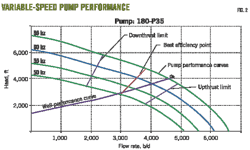Costs of designing and building refineries and petrochemical plants have ended a brief decline, according to IHS Cambridge Energy Research Associates.
An IHS CERA downstream capital costs index, which assigns 2000 costs a value of 100, rose to 172.5 for the 6 months ending in the third quarter of 2009 from 170 in the previous 6-month period.
The first-quarter index was down 9% from the 2008 peak. The index provides a benchmark for comparing global costs. It is based on proprietary databases and analytical tools.
"Just as we saw the beginnings of a downturn cost trend after the third quarter of 2008, we are now seeing the beginnings of a turnaround as the return to economic growth in most regions of the world in 2010 increases the demand for commodities and materials for general construction," said IHS CERA Chairman Daniel Yergin. "But we are still a ways off from a return to the rapid price escalation that preceded the decline."
IHS CERA said the index turned up because of a 5% increase in construction labor costs, which resulted exclusively from conversion of local exchange rates into a weakened US dollar.
Without the currency translation, the downstream construction cost index would have fallen by 2% instead of rising by 1.5%.
The weak dollar also caused a "modest gain" in engineering and project management costs, IHS CERA said.
"The impact of the weak US dollar on engineering and project management costs is masking a very high level of competition in this market," said Jackie Forrest, lead researcher for the firm's Capital Costs Analysis Forum for Downstream. "These firms are slashing profit margins, overhead costs, and risk premiums to win new work."
Downstream projects remain hampered by caution about the economic recovery and low refining margins, IHS CERA said.
Matthew Konvicka, associate director for cost and technology, said companies are reassessing refinery investments.
"The current abundance of spare refining capacity, low refining margins, and the shrinking price differential between light and heavy crudes—as well as questions about biofuels and demand in some regions—have made the economics of new refining projects marginal," he said.
The firm expects most downstream construction projects planned in China and the Middle East eventually to proceed on the strength of demand growth and economic support from local governments.
More Oil & Gas Journal Current Issue Articles
More Oil & Gas Journal Archives Issue Articles
View Oil and Gas Articles on PennEnergy.com



